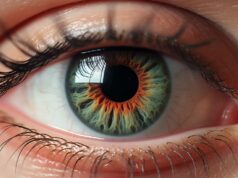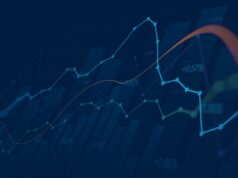
Annexin’s CEO: “Our biggest success in a long time”
Annexin reported positive findings in the phase II study with ANXV in retinal vein occlusion, RVO, in August. This justifies the continuation of the study, which now follows a simplified design that is expected to accelerate patient recruitment. CEO Anders Haegerstrand explains more about the significance of the findings and the continued development within RVO in an interview with BioStock.
Biotech company Annexin Pharmaceuticals is experiencing a very exciting year – the most interesting in the company’s history so far. Within the company’s main focus retinal vein occlusion, RVO, two studies are being conducted with the drug candidate ANXV, which is 99.5 per cent identical to the body’s own protein Annexin A5. These consist of a clinical phase II study in the USA and an imaging study in the Netherlands.
Valuable findings with ANXV in RVO
The phase II study primarily evaluates ANXV’s safety and tolerability, but also its effects on vision and retinal function in the damaged areas of the disease. Read more about RVO and ANXV’s mechanism of action here. In April, the company communicated encouraging first data from the Dutch imaging study, which evaluates fluorescent-labelled ANXV with the aim of visualising how ANXV can act locally even if injected into a vein in the arm. The data provided support for ANXV reaching the affected areas of the retina in a patient with newly diagnosed RVO. Read more here.
In August, Annexin reported further positive findings, this time in the ongoing phase II study. A total of five patients have now been evaluated in the study. Of these, two patients have shown an “unexpected long-term effect of a single dose of the standard anti-VEGF treatment,” the company writes in a press release. An independent expert committee that evaluated the data from the study and the post-study period made a recommendation to unblind the treatment, after which both patients were found to belong to the group with the active substance, ANXV. The patients had positive effects on vision and retina for four weeks even before a dose of the standard anti-VEGF treatment was introduced. The patients also remained stable for an unusually long period after the standard treatment – 5 and 8 months, respectively. These are, according to the company, very remarkable and important findings.
CEO tells us more
BioStock spoke with CEO Anders Haegerstrand, who elaborated on the significance of the results.

What do these first results in the phase II study in RVO really mean?
– This is by far the biggest success for us in a long time. It is the first time that ANXV’s effect has been tested in humans, and here we have now been able to see that two out of four patients treated with ANXV have shown signs of effect.
– To explain the background to this, an inclusion requirement for the patients in the study is that they must have a recently diagnosed and untreated RVO. The patients must not have yet received the standard anti-VEGF treatment, which involves an injection into the eye approximately every four weeks. The two patients who have been positively affected in their disease and received the active treatment ANXV, have had a different course of the disease with a significantly more stable visual acuity, reduced swelling in the eye – a full 8 and 5 months respectively after they were included in our study.
The patients, after receiving ANXV, have since received a single anti-VEGF injection, and thus did not need more because they were so stable in their disease. In normal cases, at least 4–6 treatments are required in the first year. What makes these findings extra remarkable is that the efficacy signals were already visible before the patients were treated with anti-VEGF. In addition, they received the lowest dose of ANXV.
– In addition, these biological effect signals on the eye that the patients showed agree very well with ANXV’s supposed mechanisms of action, which gives us some support that ANXV works in humans just as we hope.
– This has also had the consequence that the independent and highly competent medical expert group, who interpreted the (at the time) blinded results, recommended that we make some changes in the study going forward. These consisted partly of unblinding it, partly of removing the placebo group – but also of slightly extending the follow-up period.
Please explain to the unaware – why have patients received both ANXV and anti-VEGF?
– ANXV is given to patients who would otherwise have received anti-VEGF immediately or within a few weeks. When they leave the study, the doctor may decide that the patient might benefit from a dose of anti-VEGF. So, this happened in the two cases in question, even though they could have improved further without anti-VEGF. Patients must receive the best treatment that the doctor feels is justified. It is only when we have given a higher dose of ANXV that we can begin to get an idea of whether patients will have a sufficiently good effect from ANXV and thus avoid anti-VEGF injections completely.
You are choosing, accordingly with the expert group’s recommendations, to remove the placebo group and extend the follow-up period. How does this affect the study going forward?
– The fact that we are now removing the placebo group will likely make it more attractive for patients to participate. The positive data that we have now received should reasonably also increase interest. We reduce the number of visits to the ophthalmologist, and the patients are followed up to four months to confirm the minimised need for anti-VEGF, and to see how long the effects of ANXV last. The extended time thus ensures that we do not miss any effect signals. This also has great significance for the design of the next study.
– We assess that the removal of the placebo group does not affect the quality of the study. We chose to have a placebo group mainly for capturing any side effects. Now we have four patients with RVO and six healthy volunteers in the phase I study who received the lowest dose for five days. Another reason for the placebo was that so little is known about the details of disease progression during the first four weeks, but that need is secondary to the need to recruit patients.
The study is now open – what are the benefits of this?
– The advantages of an open study are several. We expect faster patient recruitment, because we know that the risk of receiving a placebo treatment has been a factor that discouraged a lot of patients. The physician may also be more optimistic and tell the patient considering participation that some patients receiving ANXV did not require additional injections into the eye.
What are the remaining milestones in the study?
– The most important milestone in the near term is to confirm these signals in more patients and, at the same time, evaluate higher doses of ANXV. Thanks to the fact that the study is now unblinded, the company will be able to continuously present data from treated patients, as we don’t have to focus on a final date for the study. We will also present results at scientific congresses and other events.
In conclusion, what do these positive findings mean for the company?
– Efficacy signals in the first study in patients with a new drug that attacks a previously untested mechanism are something very positive – as positive as one could have hoped for in a rather small phase II Proof-of-Concept study. We now have a dose of ANXV that so far seems free of side effects and makes sense for treatment. That said, we’ve only tested the lowest dose in patients so far, and overall, it definitely warrants continued development in RVO, with more patients receiving the same as well as a higher dose to confirm the efficacy signal and, at best, amplify it. At the same time, it points to ANXV’s – as we have mentioned many times – potential to be tested in other diseases and that ANXV can be effective without a major risk of side effects. I think partnerships are now becoming more likely.
The content of BioStock’s news and analyses is independent but the work of BioStock is to a certain degree financed by life science companies. The above article concerns a company from which BioStock has received financing.

